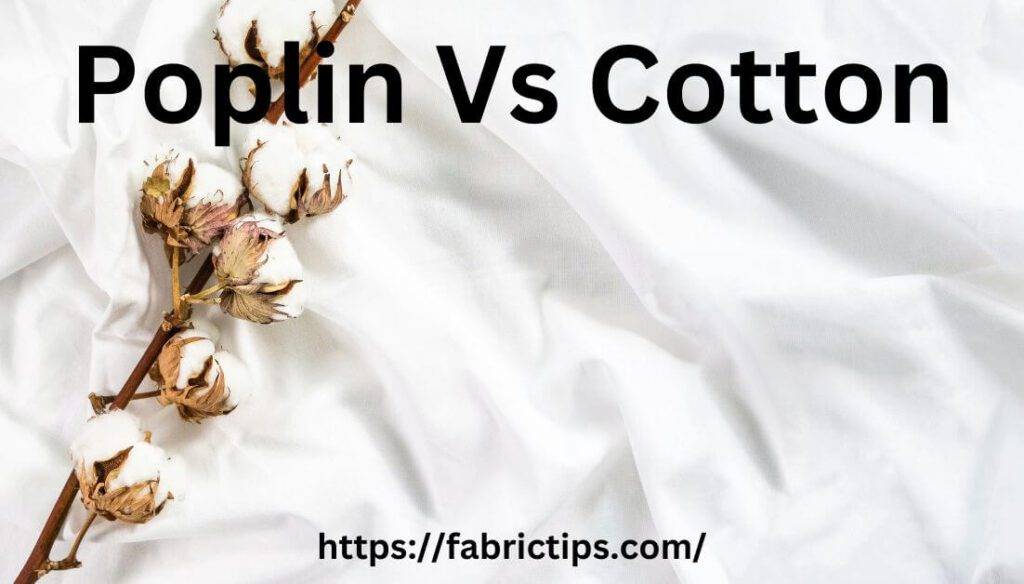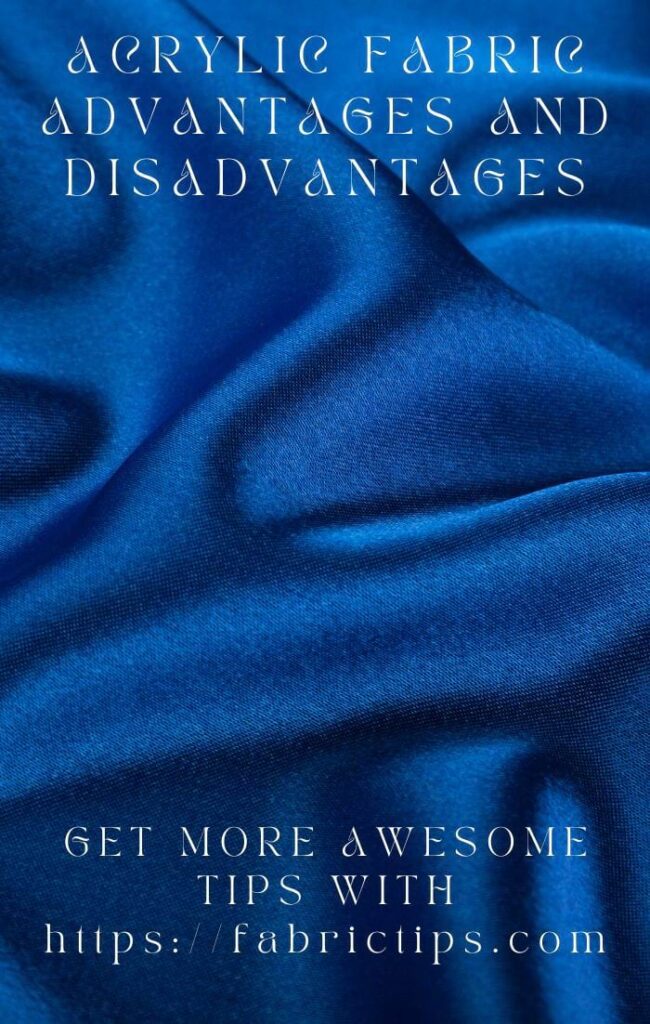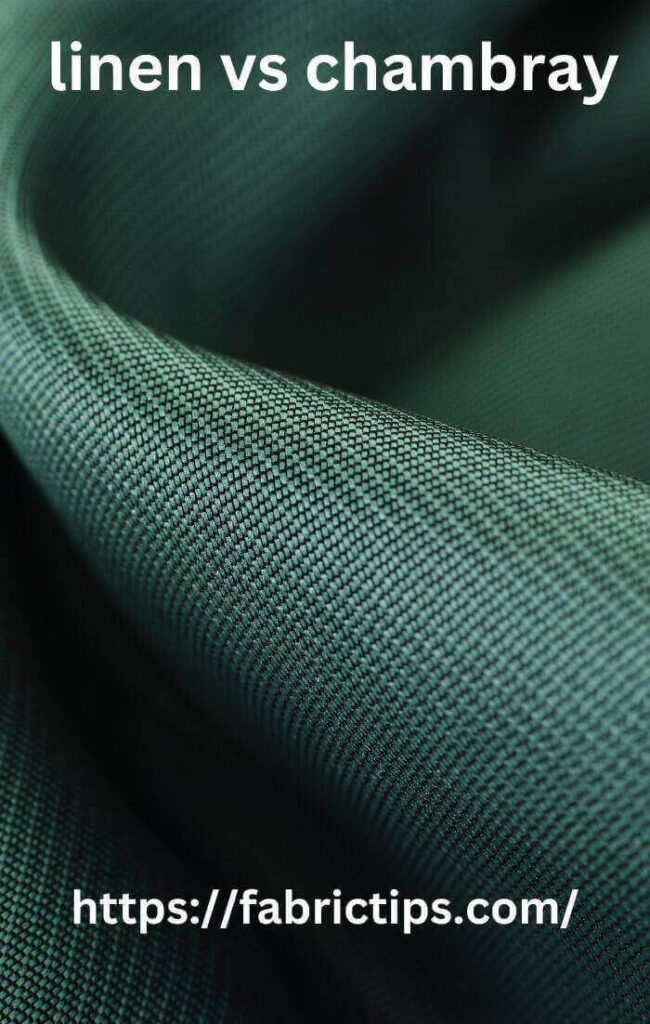Last Updated on December 13, 2025 by Wahid
Fabrics made of poplin are lightweight and plain-woven. You can wear it both socially and casually and use it for home décor. The fabric is ribbed due to straight-grain and cross-grain threads. It is also called a “tabinet.” It can be synthetic, cotton, or a combination.
Fabric made from cotton plant fibers is known as cotton fabric. It’s the world’s most versatile & popular fabric, available in a wide range of weaves. The wide spread of cotton leads most people to believe it has been used forever.
Which is the most useful fabric between Poplin Vs Cotton? Well, let’s see all their features, useability, origin, and more below.
Where Does Cotton Grow?
- A wide range of tropical & subtropical regions grows cotton, including the U.S.A, China, India, Pakistan, Brazil, Uzbekistan, and Turkey.
- Among the US states, Texas has the highest cotton production.
- However, cotton is grown in the South Plains region in the state, the world’s largest continuously cultivated cotton region.
Where Does Poplin Grow?
- The USA and Europe are popular countries for polyester poplin. Also, these countries sell good-grade organic poplin.
- Customers and designers alike love Bangladesh cotton poplin in countries such as India.
- The traditional weave of cotton poplin keeps the skin cool, crisp, and feeling soft, which makes it the perfect summer shirt.
What Is Poplin Fabric?
- Whenever you’ve wondered what poplin fabric is, this is the place to find out.
- We’re sure you’ve worn a poplin of some kind, whether a cotton-poly blend or 100% cotton poplin.
- In spite of being traditionally found in everyday attire, dresses are now part of every wardrobe, even haute couture.
- Its popularity isn’t surprising, given that it has a strong, resilient surface that is also soft and lustrous.
- Poplin a solid, all-arounder fabric that’s pretty much unbeatable.
What Is Cotton Fabric?
- Worldwide, cotton fabric ranks among the most common types of fabric.
- A textile of this type is chemically organic, meaning it contains no synthetic materials.
- Fabric made from cotton is created from the fibers that surround cotton seeds; once they are mature, they appear round and fluffy.
- Textiles made out of cotton are known from the Rakhigarhi and Mehrgarh ancient towns of India, approximately 5000 years old.
What Is Poplin Made Of?
- Poplin fabric features a distinctive ribbed pattern with tightly closed weaves. We all love the luster that this fabric has.
- A poplin weave is traditionally composed of silken warp yarns stitched together with woolen warp yarns. Ribbed textures are achieved this way.
- Today, most poplin fabrics are made of 100% cotton, which makes them lightweight but strong.
- In addition to silk, wool, satin, rayon, and polyblend fabrics, a plain weave is also used with 2 yarns that differ in thickness.
- For those who want convenience and comfort, poplin offers easy drapes and is sturdy and durable.
How Is Cotton Fabric Made?
- Textile producers make cotton fabric from the boll, which is a fibrous casing surrounding cotton seeds.
- The cotton seeds can be quite small, but their encasing bolls may be quite large.
- Firstly, cotton seeds must be separated from cotton bolls to make fabric.
- Before 1794, this step was carried out by hand, but “Eli Whitney” developed the cotton gin in 1794, which greatly speeded up the process of cotton separation.
- Cotton seeds are sown in spring, which is when cotton production begins.
- A cotton seed planter can simultaneously plant up to 10 rows of cotton seeds.
- A cotton boll appears approximately 55 to 80 days after the emergence of seedlings.
How Is Poplin Fabric Used?
- The poplin fabric has been used for a variety of applications since it was first made.
- With its perfect combination of durability & elegance, dresses made from it were highly sought after.
- However, it was also used for upholstery in the 19th century.
- During World War II, the poplin became the main material for uniforms in both the British and American militaries.
- Soldiers were kept cool as needed while being able to withstand rough weather.
- Due to these distinct properties, poplin has become a popular fabric for shirts, trousers, skirts, and jackets.
- This is such a versatile product. You can wear it both casually and formally because of the subtle sheen.
How Is Cotton Fabric Used?
- 75% of apparel products in the world contain cotton at least in some form.
- Textile fibers used the most in the world are cotton and wool.
- Manufacturers are able to create a variety of products using this fabric.
- T-shirts, for example, usually contain some form of cotton, while blue jeans are 100% cotton.
- In addition to bathmats, bathrobes, towels, duvets, blankets, and bedsheets are also made with this material.
- Many types of home decorations are made using cotton, including curtains, wall scarves, and wall hangings.
- Warm-weather clothing is commonly made from cotton since it is highly breathable & absorbent.
- In addition to being soft and drape-friendly, it is a good choice for formal & business wear.
The Origins Of Poplin Fabric
- Throughout history, the poplin became extremely popular.
- Its softness and durability make it unsurprising, as does its smooth, shiny surface.
- Prior to the 15th Century, silk and wool were used to make poplin for winter clothing.
- Its name actually derives from the word ‘papelaine’, which refers to Avignon, a former papal city in France.
- Fabric like this was very commonplace, even though it was made of silk.
- Throughout Louisa May’s book ‘Little Women’, 2 sisters confess to regretting wearing poplin dresses rather than silk to a ball.
The Origins Of Cotton Fabric
- Often, India & China are ranked as the world’s leading cotton producers.
- Statista reports that India produced 6,205,000 tons of cotton throughout 2017 and 2018.
- In comparison, china generated 5,987,000 metric tons of cotton material during these same years.
- In terms of metric tons produced, the USA is the second largest cotton producer in the world.
- Despite these 3 nations producing most of the cotton worldwide, Brazilian, Pakistani, and Australian nations regularly produce over 1 million tons per year.
How Do I Print On Poplin Fabric?
- You can print your poplin fabric in just a few minutes.
- In our design interface, you can upload your photo, design, pattern, and other images.
- With different online design tools, you can even enlarge, reduce, and repeat patterns.
- Get started by ordering a sample print, then take advantage of the discount when you order your first fabric.
- This wonderful versatile poplin fabric is now all you need to know.
- In your own swatch pack, browse poplin fabrics & other materials.
How Do I Print On Cotton Fabric?
- Cotton can be printed on digital textile printing machines.
- Reactive inks are usually used for the best quality possible since they offer the best wash fastness on cotton.
- The fashion industry also uses viscose as a digital printing material.
- The best results will be achieved when printing reactive ink on viscose, as with cotton.
- Mixed digital printing materials can generally be handled by digital textile printers with 70-30% division.
- Using a digital textile printing machine with reactive inks, a fabric composed of 70% cotton and 30% polyester is printable.
- In contrast, materials printed using 60-40% divisions will have limited color depth.
Characteristics Of Poplin
- Cool & lightweight
- Durable and strong
- Soft to touch
- Versatile
- Subtle sheen
- Lustrous face
- Doesn’t wrinkle easily
- Comfortable
- Prints beautifully
- Water resistant
- Doesn’t stain easily
- Too slim for winter
- Isn’t heat-sealed
Characteristics Of Cotton
- Lightweight
- Comfortable
- High-quality draping
- Non-elastic
- Super absorbent
- Feels soft
- Retention of colors is good
- Dry cleanable
- Great strength
- Washing by machine is possible
- Extremely shiny
- Suitable for cooling
- Dries fast
- Very durable
- Absorption of moisture is excellent
- Moisture makes fibers better resistant
Common Uses For Poplin
There are many uses for poplin fabric, including:
Shirting
In addition to casual blouses and button-ups for men, poplin is one of the most frequently used shirting fabrics. The fabric of cotton poplin shirts is more prevalent during warmer seasons than silk poplin shirts in cool climates.
Airy, Lightweight Clothing
With its lightweight texture, poplin makes a great summer top and pants choice.
Women’s Dresses
Flowy poplin dresses look great in the summer because of their light, airy drape.
Pajamas
For loungewear like pajamas, poplin is a great material because it is smooth & comfortable to wear.
Common Uses For Cotton
Several industries use cotton in various ways.
Woven Fabrics
A variety of fabrics are made from cotton, including canvas, denim, flannel, damask, and more.
Clothing
Because of its soft feel, durability, and absorbency, cotton is a staple in the textile industry. There are countless uses for cotton, including T-shirts, dresses, sweats, blue jeans, and so many more.
Bed Sheets & Towels
Cotton is both soft & absorbent, making it the perfect fabric for towels and bed linens.
Underwear. Also due to its comfort and durability, cotton makes an excellent undergarment material.
Home Decor
As well as upholstery, curtains, rugs, and pillows, cotton is found throughout the home as well.
Cottonseed Oil
In the production of cottonseed oil, the seeds are pressed into salad dressings and margarine. Other uses include cosmetics, soap, candles, etc.
Cotton Fabric Varieties

“Short-Staple Cotton”
Short-staple cotton (SS cotton) comprises fibers with a length of about 1.125 inches. Despite its convenience for everyday use, cotton isn’t as soft as other types.
“Long-Staple Cotton”
In cotton, long-staple (LS) means fibers with a length between 1.125 to 1.25 inches. Cotton of this type has a more luxurious feel than cotton of the SS type.
“Extra-Long-Staple Cotton”
In cotton, extra-long staple (ELS) refers to fibers longer than at least 1.25 inches. There is no cotton type that is more luxurious & soft than ELS cotton.
“Egyptian Cotton”
Egyptian cotton comes in two varieties: LS cotton and ELS cotton. Cotton Giza 45, for instance, exceeds 45 millimeters (1.77 inches) in length, making it the world’s longest cotton variety.
“Pima Cotton”
Early in the 20th century, the U.S. government collaborated with the Pima Indians to create Pima cotton. The fabric is considered a durable form of cotton.
“Supima Cotton”
Pima cotton, given the American Supima Association’s blessing, is known as Supima cotton (ASA). To qualify as “Supima,” Pima cotton must be grown organically in the “United States.”
Poplin Vs Cotton: What’s The Best?
There is a major difference between poplin and cotton: “the thread spun from cotton fibers into soft, fine, breathable, lightweight fabric and textiles are cleaned to remove wax & proteins.” Poplin fabric is a corded, plain-woven fabric usually made of lightweight cotton.
Fabrics are made from cotton, which is technically a fiber. According to the structure of the weave, cotton fabrics come in various forms, including cambric, sheeting, poplin, etc. A weave is the interlacing of two yarn sets in width and length.
Usually, poplins are made from cotton with a specific structure. Both directions use yarns of the same fineness, but the length direction uses many more yarns than the width direction. When this construction is followed, the fabric will be more compact. Additionally, it is comparatively more comfortable for the wearer. Poplin, because of its particular structure, gives garments an elegant touch of texture.
Difference Between Poplin And Other Materials
Many fabric types are available on the market, including linen, cotton, flannel, etc. So, let’s go over what separates poplin from other fabrics.
Poplin Vs Cotton
- “Cotton and poplin” making process and textures are different, but they are made from the same natural fibers.
- Due to their softness, smoothness, easy operation, and dyeing possibilities, both fabrics have many advantages.
- However, the material texture depends on its fiber type.
- Since poplin has a tight weave, it resists water & stains better than cotton and is stronger.
- In addition, silk poplin provides a smoother finish than ever before.
Poplin Vs Broadcloth

- Poplin and broadcloth share so many similarities that they might even be considered the same.
- There is only a noticeable difference in yarn thickness.
- Despite being woven similarly, broadcloth yarns are stiffer and thicker, making clothing more robust in texture.
- Conversely, poplin is very soft to the touch, as well as strong.
Poplin Vs Linen
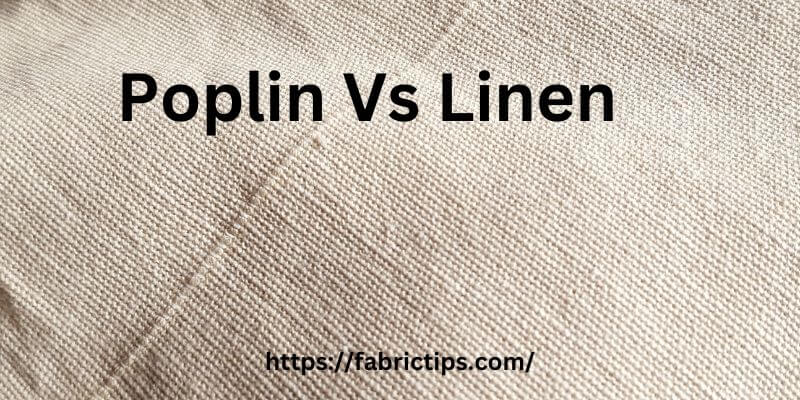
- Linen and poplin both have the advantage of being very comfortable, ideal for summer.
- It’s amazing how breathable they are. However, they do differ in several ways.
- There is no rigid strength and robustness to linen materials like poplin.
- In addition, poplin tends to stay wrinkle-free as easily as linen, which is a silky fabric.
Poplin Vs Flannel

- In the summer, poplin is the best choice, while in fall or winter, flannel is the best.
- Mostly brushed poplin or brushed twill, these fabrics are fuzzy and warm.
- Their thicker weave contrasts with the poplin’s thinner plain weave.
- There is also the option of combining cotton wool and cotton cashmere for an extra layer of warmth in the flannel-like poplin.
Poplin Vs Twill

- Both poplin and twill feel somewhat similar. Despite this, both fabrics have thin ribs.
- A twill rib runs diagonally, and a poplin rib runs crosswise.
- Poplin is also better suited to catch the breeze in summer, whereas twill is more suited to the winter to stay warm.
- Both fabrics are extremely durable & stain-resistant.
- Using both will enable you to design flowy dresses. However, twill gives your office dresses a more professional touch.
Poplin Vs Oxford
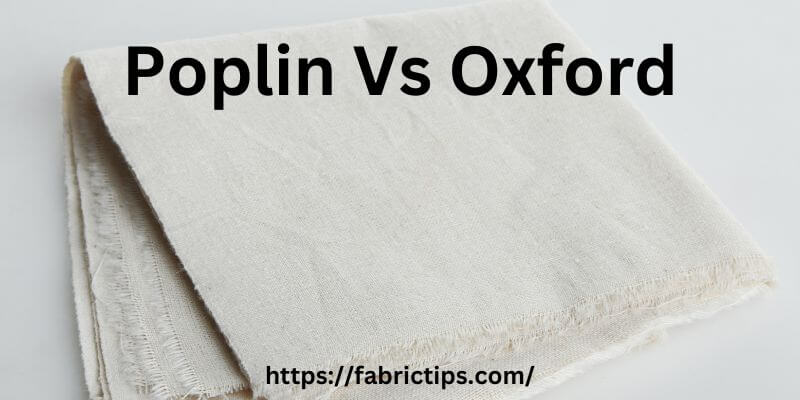
- Poplin and Oxford have very different characteristics in terms of texture, feel, & even weaving type.
- In poplin, the texture is smoother with a plain weave, while in oxford, the weave is symmetrical, and the texture is rougher.
- There are no formal office wear or dresses made of Oxford fabrics.
- This method is best suited for making non-iron casual polo shirts.
Frequently Asked Questions
01. What is the difference between cotton and cotton poplin?
The poplin weave was traditionally constructed with thin warp yarns of silk and heavier wool yarns for filling. Ribbed textures are obtained by doing this. Today, most poplin fabrics are made of 100% cotton, allowing them to be lightweight while retaining strength.
02. Is cotton poplin heavier than cotton?
The lawn is lighter in weight, while cotton poplin is thicker. There are light and medium-weight fabrics available. A crisp cotton shirt or blouse is commonly made from shirting cotton. Clothing & home decor can benefit from the durability and light weight of poplin fabric.
03. Does cotton poplin drape?
When used for dressmaking, poplin is simple to sew, like most cotton fabrics. Because it’s 100% cotton, it’s comfortably cool and has a nice drape. Durable and strong, it is often printed with beautiful designs and used in children’s clothing.
04. What is the difference between cotton and cotton poplin?
Traditionally, poplins were plain weave garments constructed from warps of silk, surrounded by heavy wool yarn. The classic ribbed texture is achieved this way. Poplin fabric today is usually made of 100% cotton, which makes it lightweight while maintaining its strength.
05. Is poplin wrinkle-resistant?
In addition to being wrinkle-resistant, poplin is also lightweight. You can smooth it out by steaming or tumble dry it on low heat.
06. What fabric is most breathable?
Obviously cotton. Cotton is breathable, as you undoubtedly already know. Fabrics such as cotton are very breathable. Both casual and professional attire are available in comfortable and fashionable styles.
Conclusion
We all know that Poplin Vs Cotton is a big debate. Modern poplin primarily consists of 100% cotton, thus being lightweight yet still strong. If you intend to make any buying decision, you should know what you will use it for. It is also important to consider quality, comfort, season, area, and budget when making your final decision.
